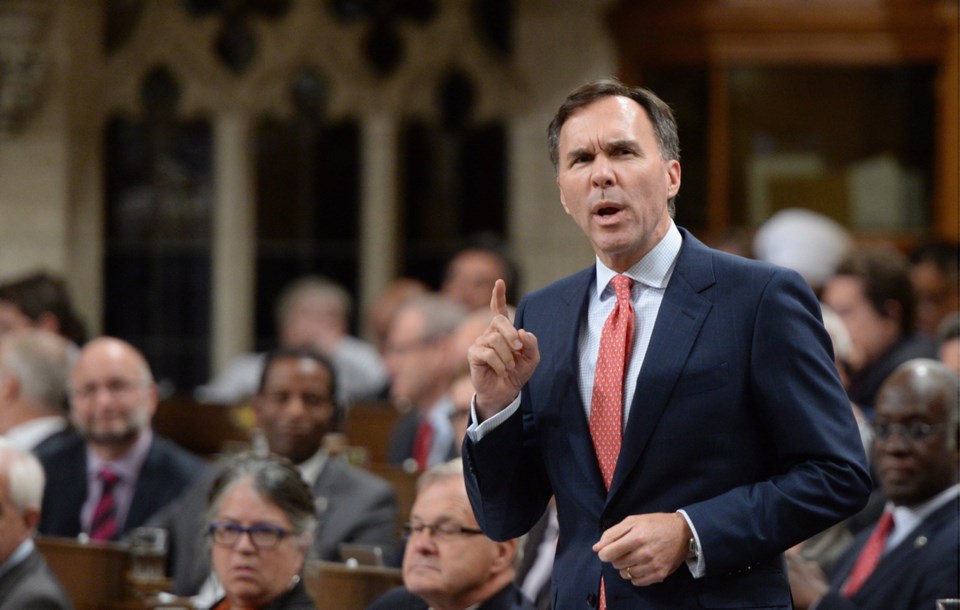The federal government will create a $11.2-billion national housing strategy over the next decade, but critics say those who are struggling to find housing won’t see any of that money for years.
In tabling his 2017 budget on Wednesday, Finance Minister Bill Morneau touted the housing spending as the “largest single commitment in budget 2017 … to help ensure every Canadian has a safe and affordable place to call home.”
Part of the housing strategy will include a $5-billion National Housing Fund and $3.2 billion to work with provinces and territories to build and repair affordable homes and offer rental subsidies.
Murray Rankin, NDP MP for Victoria, said the majority of spending on housing won’t come until after 2019, which is when the next federal election is scheduled.
“The numbers sound great, but it’s so back-end loaded that less than 10 per cent of it is going to happen during the current term,” Rankin said.
Rankin wants to know when communities will start seeing the housing funding and “how much is coming to Victoria?”
With a 0.5 per cent rental-unit vacancy rate, the lowest in the country, Rankin said Victoria is seeing a “housing crisis” that demands action now.
“We need shovels in the ground, we need things happening now,” he said.
Victoria Mayor Lisa Helps said there are items in the budget that could benefit the city.
“The housing money is definitely something that all mayors across the country have been watching for, so it’s good to see that there — especially the $5 billion for a National Housing Fund,” Helps said.
Victoria Coun. Chris Coleman, chairman of the B.C. Caucus for the Federation of Canadian Municipalities, called the $11.2 billion for a National Housing Strategy “a bit of a game changer.”
“The [federal] government has been out of that area for 40 years,” Coleman said.
“It’s a 10-year program, but they’re in. I think it’s a good thing.”
Stephen Portman, advocacy lead for the Together Against Poverty Society (TAPS), said that while the housing strategy is a good start, it shows a fundamental misunderstanding of how dire the housing crisis is in Canada.
Portman pointed to a Canadian Alliance to End Homelessness estimate that it would take $43 billion over 10 years to end homelessness Canada-wide.
The Greater Victoria Coalition to End Homelessness said the government should be applauded for the significant investment in social and affordable housing, but the coalition also raised concerns about the scale of the current housing crisis, particularly in the capital region.
“[Wednesday’s] budget is a significant step in a very positive direction for individuals struggling through experiences of homelessness or are at-risk of homelessness due to a lack of affordable housing”, said Ian Batey, co-chair of the coalition.
The coalition noted that in the capital region, about 47 per cent of renter households are spending more than 30 per cent of before-tax income on housing.
It said 24 per cent of renter households face extreme affordability pressures and spend more than 50 per cent of their before-tax income on housing.
The budget commits $2.1 billion over 10 years to tackle homelessness and $225 million over the next 11 years to help First Nations people living off reserves afford housing.
“I’m glad to see some money that’s specifically earmarked for the indigenous population, because indigenous people right now are making up a greater percentage of people living in poverty,” TAPS executive director Kelly Newhook said.
“It’s some kind of acknowledgment, but it’s nowhere close to enough to deal with the colonialism and the structural oppression that indigenous people have had to deal with in our Canadian history.”
Elizabeth May, leader of the federal Green Party and the MP for Saanich-Gulf Islands, said she was thrilled to see $89 million allocated over five years to the Sidney Centre for Plant Health to allow the research facility to support Canada’s agriculture and agri-food sector.
May said derelict boats have been a major issue of concern for people in Greater Victoria, and that the government promised a “comprehensive plan to address abandoned, derelict and wrecked vessels” would be part of its $1.5-billion oceans protection plan.
Under the budget, Parks Canada will get $364 million over two years, and May hopes some of that could be earmarked for the purchase of Owl Island, a small Island in the southern Gulf Islands that’s been called an “ecological jewel.”
The budget offered no new money for the RCMP or border services, beyond a $143-million funding package already announced.
Randall Garrison, NDP MP for Esquimalt-Saanich-Sooke, whose riding includes CFB Esquimalt, was disappointed to see no major funding commitments for the Canadian Forces.
“We can’t ask people to go do these missions overseas without having adequate funds,” Garrison said.
Langford Mayor Stew Young said he’s surprised there wasn’t more money for policing given such emerging issues as the fentanyl crisis.
“Every community is demanding more policing. There’s nobody who is standing up as a local politician in this country saying: ‘Wow, I’m so happy I’ve got way too many policemen.’ ”
The budget also included some possible goodies for Victoria’s thriving tech sector: the creation of the Impact Canada Fund that includes $300 million over 11 years to support the Smart Cities Stream; $125 million to launch a pan-Canadian artificial intelligence strategy for research and to attract talent; $50 million over two years to fund a program to teach kids digital coding, and $29.5 million over five years for non-profit organizations to run a Digital Literacy Exchange program to teach basic digital skills to vulnerable groups.
Said Helps: “It seems that the government wants to either keep or put … Canada on the global stage as a place where innovation can happen, [with] the funding for kids to learn code and the investment in smart cities.
“All of those things, I think, are moving from a resource economy to a knowledge economy globally.”



